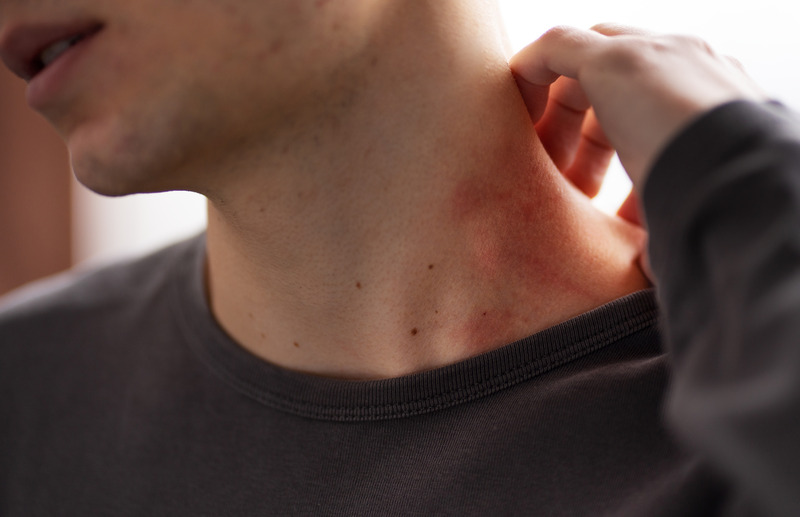After wisdom tooth extraction, there will be an open cavity where the tooth once was, which can become a food trap. Food can get stuck in this hollow cavity when you eat. Don’t worry if food stuck in wisdom tooth hole. There are several ways to remove it including by gently brushing, flossing, or rinsing teeth with herbal tea and salt water.
Wisdom tooth extraction is a very common dental procedure that many people face. According to research published by the U.S. National Library of Medicine, approximately 10 million wisdom or third moral teeth are extracted from 5 million individuals annually.
A specialist, such as an oral surgeon, does wisdom teeth extraction. After an operation, your mouth will begin to recover by forming a blood clot over the extraction site of your wisdom teeth.
However, once the tooth is surgically extracted, you must follow several guidelines to ensure a speedy and complete recovery, such as avoiding food particles in the extraction site.
Food stuck in wisdom tooth hole can’t get it out? Luckily, we’ve quite a few tricks to help you get food out of wisdom teeth holes. Try the given tips to dislodge the food particles to continue the healing process safely.
Rinse with salt water
Warm salt water rinses are one of the safest ways to remove food stuck in wisdom tooth hole. Do not rinse your mouth for the 24 hours after tooth extraction. Afterward, if food lodges in an empty hole, you can rinse your mouth with warm salt water or saline, which will help dislodge the food particles.
How to properly rinse with salt water:
- Add 1 teaspoon of table salt to 8 oz of warm water (neither hot nor cold).
- Swish the salt water around your mouth for up to 2 minutes.
- Do not vigorously swish the water, as this could dissolve the blood clot forming over the hole in wisdom tooth.
- Allow the water to flow from your mouth into the sink when done.
- Repeat rinsing 3 to 4 times in the morning and before bed.
Rinse with mouthwash
A gentle mouthwash is highly effective at removing food stuck in gums and cavity holes. However, do not rinse your mouth for the first 24 hours after wisdom tooth removal.
Choose an antiseptic mouthwash that your dentist recommends. The majority of mouthwashes require 30 to 60 seconds to activate.
Ensure that the mouthwash reaches all areas, including the hole in the wisdom tooth where food debris may be lodged.
Warm water syringe
A wisdom teeth syringe allows you to direct the passage of water from all angles into the empty hole, which helps remove the food stuck under gum line.
How to use syringe with warm water:
- Fill a sterile syringe with water that is at room temperature or a little warm.
- Hold the syringe near the opening.
- Let the water lightly touch all sides of the food. It may assist in removing it.
- Ensure that a forceful gush of water does not fall on the hole.
Spray the warm water bottle
If you don’t have a syringe, utilizing a spray bottle filled with warm water may also be effective for removing food stuck in teeth holes. Fill a clean spray bottle with warm water and direct it toward the wisdom tooth holes where food is lodged.
Prescription sanitizer
You may have been prescribed a prescription mouth rinse, chlorhexidine, to use twice daily, once at night and once in the morning. Chlorhexidine rinse will help remove food in wisdom tooth hole, but this mouth rinse also has antibacterial properties that promote faster gum healing. The faster your gums heal, the sooner the hole will close, and food will no longer become lodged there.
How to use chlorhexidine mouth rinse:
- Pour 15 ml of chlorhexidine into a measuring cup.
- Rinse your mouth vigorously for 1-2 minutes and spit it out.
- Don’t drink or eat anything for an hour.
Water flosser
A water flosser is a high-pressure oral pulsating irrigator. You can use a water flosser or waterpik after wisdom teeth removal to dislodge stuck food in teeth.
How to irrigate wisdom teeth with a water flosser:
- Fill the dental irrigation device with warm water.
- Direct the water flosser at the gaps in the teeth.
- To remove food debris, press the button.
The water flosser is the most effective alternative to a syringe to clean the cavities in wisdom teeth. Use a water flosser if you can’t get food out of wisdom tooth hole with syringe.
Brush gently
You can also use a clean, new, soft-bristled toothbrush to dislodge impacted food in gums or hollow cavities.
Precautions should be taken not to apply too much pressure, which could result in further irritation and bleeding.
Avoid vigorous brushing. Use very gentle strokes instead. You can use this technique at least 7 days after your surgery.
Cotton swab
If a soft-bristle brush causes discomfort, gently brush the area with a sterile cotton swab. Avoid pushing the food particle further into the tooth cavity.
Before using this technique, you should wait at least one week after surgery.
Use Clove oil
Clove oil is well-known for its natural anti-inflammatory and antibacterial properties, which can remove food stuck in cavity hole. It helps to kill microorganisms and prevent infection in the wisdom tooth hole.
How to get food out of wisdom tooth hole using clove oil:
- Use a cotton swab or a clean finger to apply the oil directly to the wisdom tooth.
- You can use a syringe filled with warm water to remove food in wisdom tooth hole after using clove oil.
- You can also use coconut oil and oregano oil to remove food traps in teeth.
Natural remedies
There are several homemade remedies to remove food stuck in wisdom tooth hole.
Wash your mouth with a solution of hydrogen peroxide and water to remove food debris.
Rinsing your mouth with lukewarm herbal teas also works effectively to remove food stuck in the wisdom holes. Use the same technique as a salt water rinse, and do not spit out the tea. When done, allow it to pour into the washbasin from your mouth. You can try some good teas such as:
- Peppermint tea
- Green tea
- Turmeric
- Chamomile
Rinse your mouth with a mixture of saline and turmeric. It is effective in removal of food particles or debris. When applied directly, it can provide relief and foster gum healing.
How can you avoid food from getting stuck in the cavities in wisdom teeth?
Oral health is an important indicator of your overall health, wellness, and quality of life. Here are some tactics to prevent food from getting stuck in gums or wisdom teeth holes.
Avoid crunchy and hard foods
Eat soft food and avoid eating hard and sticky food, particularly after wisdom tooth removal. Candies, seeds, nuts, and crunchy snacks can easily get stuck in the wisdom tooth holes and cause gum infections.
Additionally, you should avoid spicy and acidic foods, as they may dissolve the blood clot.
Don’t chew close to the hole
Do your best to chew on the opposite side of your mouth while the wisdom tooth hole is healing. However, if you have multiple missing teeth, it may be impossible.
Drink water while eating and after meals
Taking water during and after meals can help rinse away food particles and reduce the possibility of food getting stuck in gums and tooth holes.
Rinse your mouth with water after eating
Rinse your mouth promptly after eating to remove bacteria and food particles. Your best options are a saltwater rinse or a mouthwash that kills germs.
How long does it take for the wisdom hole to close?
The time required for a wisdom tooth hole to close varies from individual to individual. In general, however, it takes between 7 and 10 days to recover from minor wisdom tooth extraction.
The healing process depends on various factors, including the severity of the tooth removal and the patient’s ability to comply with post-operative care instructions.
When should I consult a doctor?
Immediately consult your doctor if you experience any of the following symptoms or dry sockets:
- Swelling that worsens after two- or three days post-surgery
- Severe pain
- Pulsating, tingling, or a stinging feeling in the gum
- Pus seeping from the surgical site
- Excessive blood loss
- Fever
- Blood or mucus in nasal discharge
Also Read: Eye Yoga Exercise: 6 Proven Eye Exercises You Must Try
Closing remarks
After the wisdom tooth extraction, a cavity may be prominent in the tooth. Sticky food particles can get stuck in tooth hole.
By following the above discussed tips, removing food stuck in wisdom tooth hole is simple.
Remember that the healing of the wisdom tooth holes began from the bottom, not the top. And don’t be concerned that the food is permanently lodged in your gums.
FAQs
What if food gets stuck in a wisdom tooth hole?
If food remains stuck in cavities in wisdom teeth for an extended period, it can cause a foul smell and prolong the healing process. They are not life-threatening, but they will be annoying and cause discomfort.
What should I do if the food stuck in wisdom tooth hole 3 weeks after?
If food is stuck in the wisdom tooth hole after 3 weeks of extraction, remove it as quickly as possible. If the food stuck in the teeth, it may cause various complications, including infection and pain. Consult your dentist if the food remains stuck to the hole of your wisdom tooth after trying all of the above tips.


